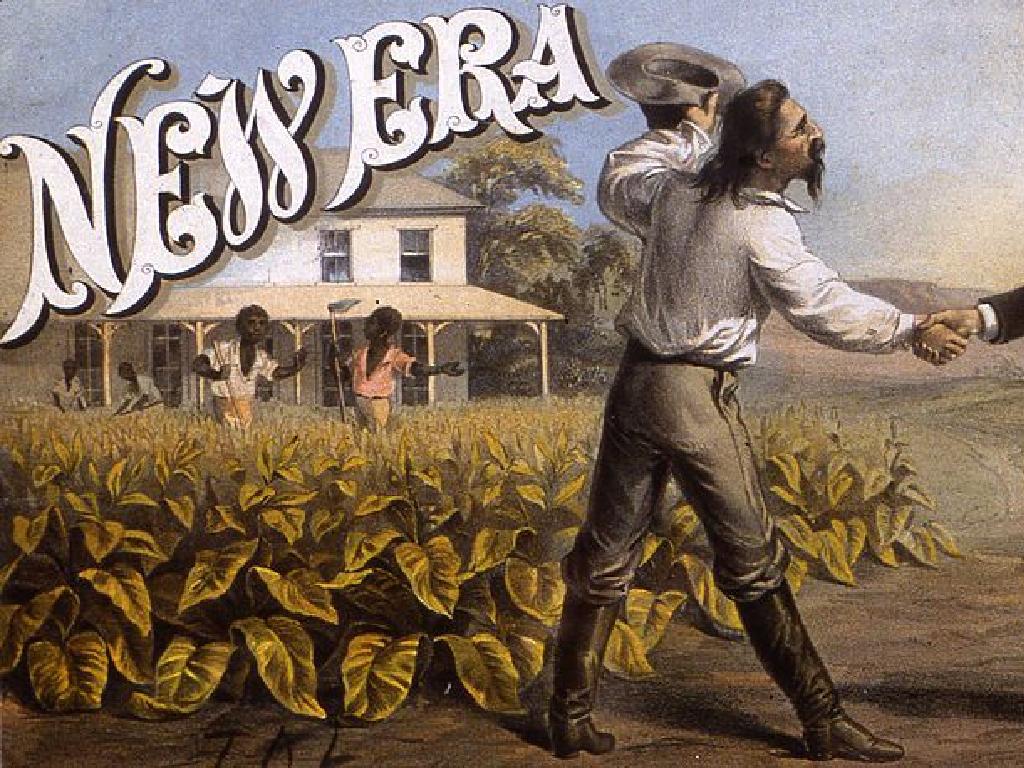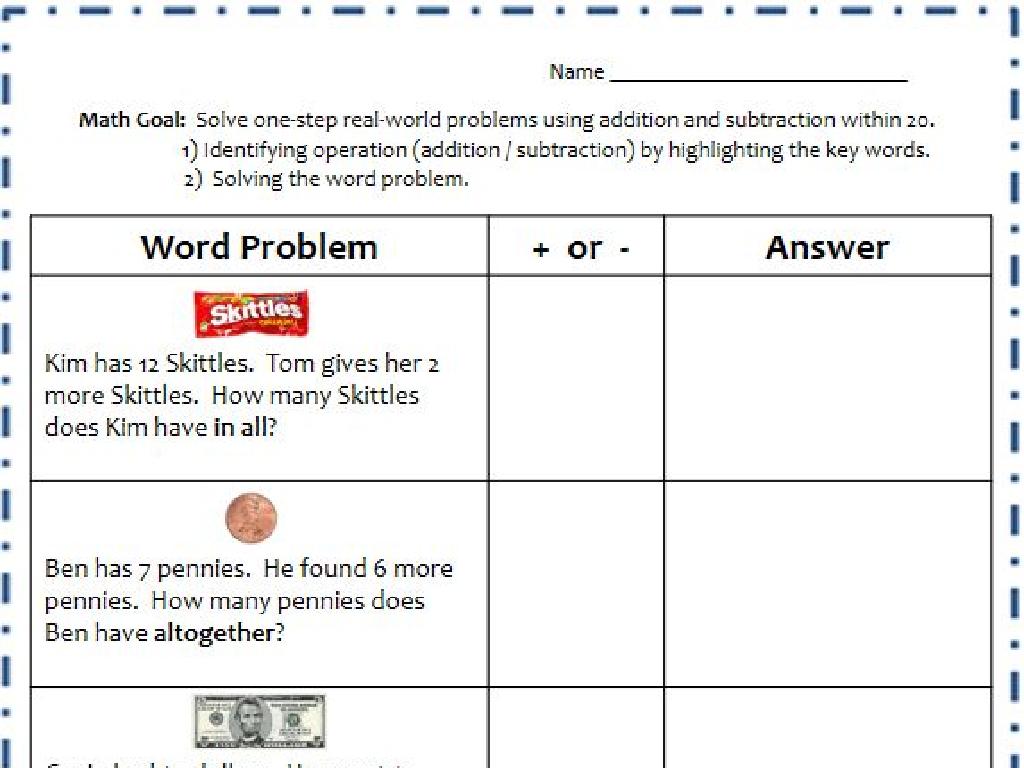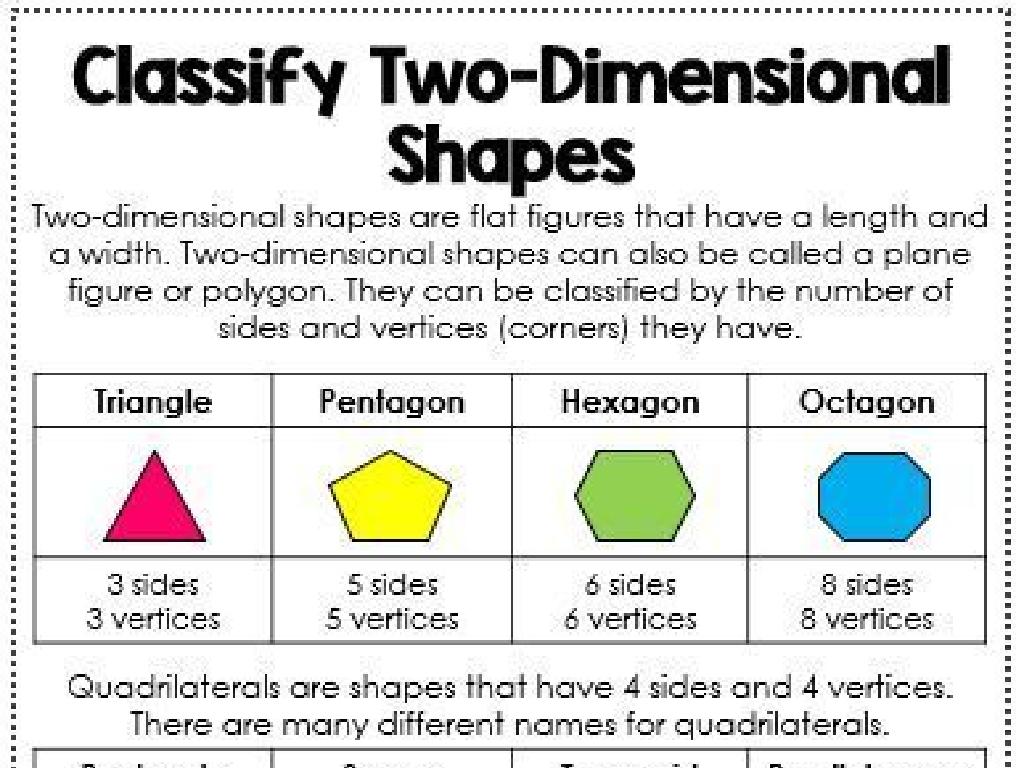Multiply Mixed Numbers
Subject: Math
Grade: Sixth grade
Topic: Multiply Fractions
Please LOG IN to download the presentation. Access is available to registered users only.
View More Content
Multiplying Mixed Numbers
– Recap: What are fractions?
Fractions represent parts of a whole, like 1/2 of a pizza.
– Understanding mixed numbers
Mixed numbers combine whole numbers and fractions, e.g., 2 1/3.
– Importance of multiplying mixed numbers
Multiplying mixed numbers is vital for advanced math concepts.
– Practical applications
|
Begin with a brief review of fractions to ensure students recall that fractions represent parts of a whole. Then, introduce mixed numbers as a combination of whole numbers and fractions, providing examples like 2 1/3 to illustrate. Explain that understanding how to multiply mixed numbers is crucial as it lays the groundwork for more complex mathematical operations they will encounter in higher grades. Emphasize real-world applications such as cooking, where recipes often require multiplying mixed numbers to adjust serving sizes. This will help students grasp the practical importance of the concept. Encourage students to think of other areas where they might need to use this skill.
Understanding Mixed Numbers
– Define mixed numbers
A number with a whole part and a fraction part, e.g., 2 1/2
– Examples of mixed numbers
Like 3 3/4 (pizza slices), 5 1/2 (hours of play)
– Convert to improper fractions
Multiply whole part by denominator, add numerator, e.g., 2 1/2 becomes 5/2
– Multiplication application
|
Begin by defining mixed numbers, ensuring students understand the concept of having both a whole number and a fraction combined. Provide relatable examples such as portions of pizza or durations of time to illustrate mixed numbers in a context they can visualize. Then, guide students through the process of converting mixed numbers to improper fractions, which is a crucial step before multiplication can be performed. Emphasize the importance of this skill as a foundation for multiplying mixed numbers, which will be covered in subsequent lessons. Encourage students to practice this conversion with various examples.
Multiplication as Repeated Addition
– Review whole number multiplication
– Introduce fraction multiplication
– Relate fractions to repeated addition
– Just like 3 x 4 means 4 + 4 + 4, multiplying by a fraction adds the fraction repeatedly
– Example: Multiplying mixed numbers
– E.g., 2 1/2 x 3 means adding 2 1/2 three times
|
Begin by reviewing how multiplication with whole numbers is essentially adding the same number repeatedly. This sets the foundation for understanding multiplication with fractions. Introduce the concept of multiplying fractions and relate it to repeated addition, which they are familiar with. Explain that when we multiply by a fraction, we are adding that fraction to itself a certain number of times. Use an example with mixed numbers to illustrate this concept, such as 2 1/2 x 3, and show how it is the same as adding 2 1/2 three times. This will help students grasp the idea of multiplying mixed numbers by relating it to a concept they already understand.
Multiplying Mixed Numbers
– Convert to improper fractions
– Change mixed numbers like 2 1/3 to improper fractions like 7/3
– Multiply the numerators
– If you have 7/3 and 4/5, multiply 7 by 4
– Multiply the denominators
– For the same fractions, multiply 3 by 5
– Simplify the final fraction
– Reduce the fraction to its simplest form, if needed
|
When teaching students to multiply mixed numbers, start by converting them to improper fractions to simplify the multiplication process. Emphasize the importance of understanding that a mixed number represents a whole plus a part. Once converted, guide students to multiply the numerators (top numbers) to find the new numerator and the denominators (bottom numbers) to find the new denominator. After multiplication, it’s crucial to simplify the fraction to its lowest terms, which may involve dividing by the greatest common factor. Provide examples and practice problems to ensure students grasp each step and can perform the operations independently.
Multiplying Mixed Numbers
– Convert to improper fractions
– Change mixed numbers to improper fractions before multiplying, e.g., 2 1/3 becomes 7/3.
– Multiply the numerators
– After conversion, multiply the top numbers, e.g., 7/3 x 4/5 = 28/15.
– Multiply the denominators
– Multiply the bottom numbers of the fractions, e.g., 3 x 5 in the example.
– Simplify the result
– Reduce the fraction to its simplest form, if possible, e.g., 28/15 is already simplified.
|
Begin with a visual example, such as 2 1/3 x 4/5, to show students how to multiply mixed numbers. First, convert mixed numbers to improper fractions. Then, multiply the numerators (top numbers) to get the new numerator. Do the same with the denominators (bottom numbers) for the new denominator. Lastly, simplify the resulting fraction if necessary. Walk through each step, ensuring students understand the conversion and multiplication process. Use additional examples to reinforce the concept and provide practice problems for students to try on their own.
Multiplying Mixed Numbers: Practice
– Solve mixed number problems
– Example: 2 1/3 x 1 1/2. Convert to improper fractions first.
– Discuss solving strategies
– Break down steps and look for patterns.
– Class walkthrough of problems
– Solve 3 3/4 x 2 2/5 together, step by step.
– Encourage peer discussion
|
This slide is aimed at providing students with practice problems to solidify their understanding of multiplying mixed numbers. Start by solving simple multiplication problems that involve mixed numbers, ensuring to demonstrate the conversion of mixed numbers to improper fractions. Discuss various strategies that can be used to solve these problems, such as using visual aids or breaking down the problem into smaller, more manageable parts. Work through problems as a class to provide a guided approach, and encourage students to discuss their methods and reasoning with peers for collaborative learning. This activity will help students to not only practice the multiplication of mixed numbers but also to understand the underlying concepts more deeply.
Class Activity: Multiplying Mixed Numbers
– Pair up for a multiplication race
– Receive mixed number problems
– Solve problems with your partner
– Work together to find the product of mixed numbers
– First to finish wins a prize
|
This activity is designed to encourage collaboration and to reinforce the concept of multiplying mixed numbers. Start by pairing up students, aiming to mix different ability levels so they can learn from each other. Distribute a set of mixed number multiplication problems to each pair. The race element adds excitement and a friendly competitive edge to the learning process. Ensure that each pair has a clear understanding of how to convert mixed numbers to improper fractions, multiply, and then convert back to mixed numbers if necessary. Have a prize ready for the first pair to correctly complete all their problems. This could be a simple token or a privilege, like leading the next class activity. After the race, review the problems as a class to solidify the learning.
Wrapping Up: Multiplying Mixed Numbers
– Recap: Steps to multiply mixed numbers
– Convert to improper fractions, multiply, then simplify.
– Practice makes perfect
– Homework: Apply what you’ve learned
– Solve assigned problems to reinforce today’s lesson.
– Share any questions next class
– Bring up difficulties for clarification.
|
As we conclude today’s lesson on multiplying mixed numbers, it’s crucial to review the steps: converting mixed numbers to improper fractions, multiplying the numerators and denominators, and then simplifying the result if possible. Emphasize the importance of practice in mastering this concept. For homework, assign a set of problems that cover a range of difficulties to ensure students apply the steps learned. Encourage them to attempt all problems and note any questions or challenges they encounter to discuss in the next class. This will help identify areas where they may need additional support.





